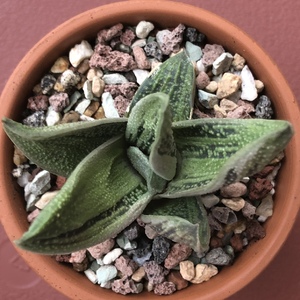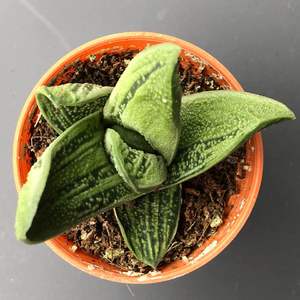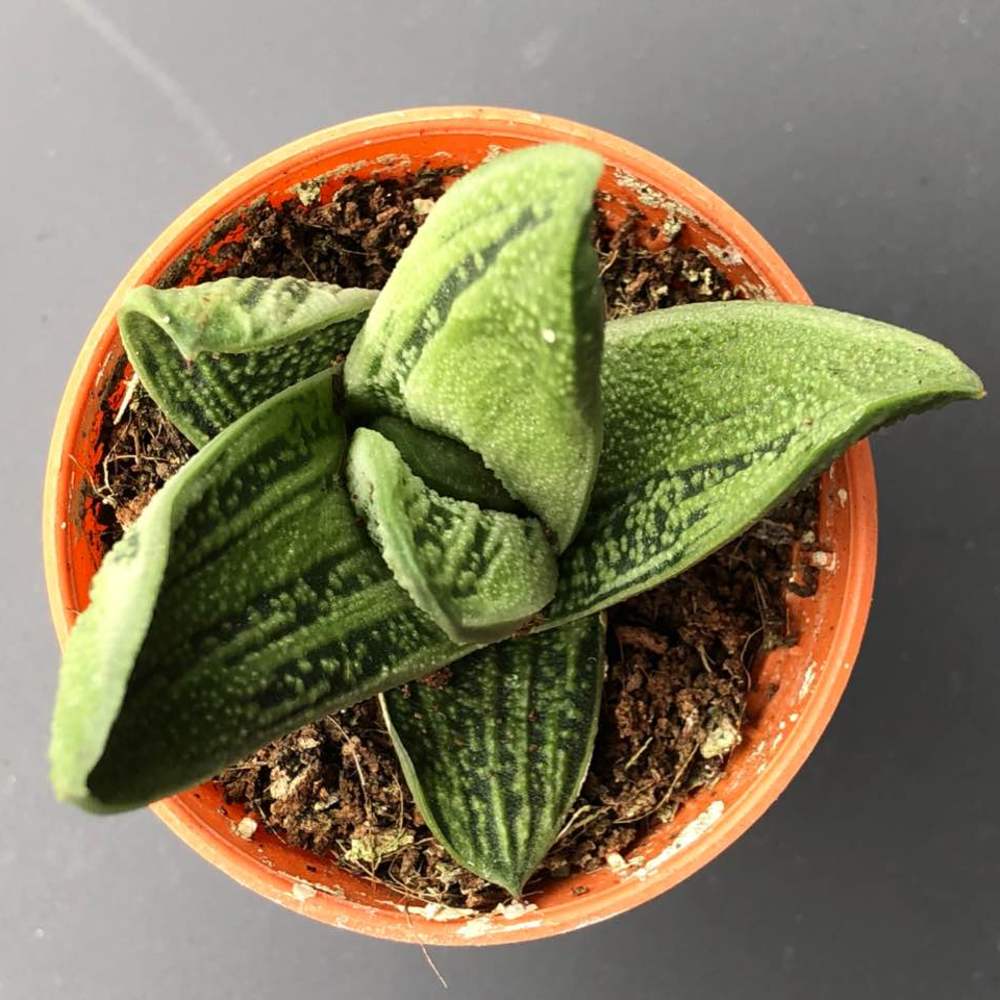植物经验
详细说明
Gasteria ‘Little Warty’ is a small succulent plant with attractive leaf color that clumps easily and not so little in time, but slow. The white and green color along with it hard plastic appearance make it looks very unusual. It is indeed quite unstable and several slightly different clones and growing forms are available. The leaves are distichous or more or less spiraled, firm, bright green (to dark-green in full sun) with raised pale silvery-green or pale olive-green stripes and edge with lots of pearly tubercles (warts) in the upper and under sides. The roots are thick with little branching.
Gasteria are often grouped with Haworthia because the plants have similar cultural requirements. Both are attractive, small succulents that can tolerate somewhat more shade than many succulents, which makes them more suitable as houseplants. Gasteria are susceptible to fungal infections, which usually appear as black spots on the leaves. These are the result of too much humidity or water on the leaves, but they should not spread too quickly. Gasteria have a natural defense mechanism against such fungal attacks and attack the invading organism and seal off the wounded spot. In general, any place where Haworthia and Aloe thrive will be hospitable to a Gasteria.
Growing Conditions
Light: Bright light, but not direct sunlight. These grow in similar conditions to Haworthia succulents. White or yellow leaves usually signify too much sun.
Water: Water evenly and generously in the summer, letting the soil media dry out between waterings. In the winter, reduce watering to every other month, but do not stop watering. Never allow water to collect in between the leaves.
Temperature: Warmer summers but cool in the winter (down to 50˚F/10˚C). During warmer weather, your Gasteria leaves might turn a lighter, brighter color or the plant might flower with small, colorful sac-shaped flowers.
Soil: Use a cactus mix or very fast-draining potting soil mixed with sand.
Fertilizer: Fertilize during the summer growing season with a cactus fertilizer. Don’t feed during the winter.
Propagation
Gasteria can be propagated at repotting time using offsets from the mother plant or from leaf cuttings, depending on the species.
When taking offsets, use a sharp knife or snippers and cut as close to the mother stem as possible to including as many roots as possible, then allow the offset to dry briefly before repotting it (similar to cuttings from other succulents). Pot the offsets in a small pot, using the same soil as the mother plant, and put it a warm, bright spot and make sure to adequately water.
Repotting
Gasteria are small, shallow-rooted, and relatively slow-growing. They are often grown in small clusters in wide, shallow dishes. Over time, clusters will naturally enlarge as the mother plant sends off small plantlets. When the cluster has outgrown its dish, repot in the spring or early summer into a new wide and shallow dish with fresh potting soil. This is also the time to take offsets for propagation.
Gasteria are often grouped with Haworthia because the plants have similar cultural requirements. Both are attractive, small succulents that can tolerate somewhat more shade than many succulents, which makes them more suitable as houseplants. Gasteria are susceptible to fungal infections, which usually appear as black spots on the leaves. These are the result of too much humidity or water on the leaves, but they should not spread too quickly. Gasteria have a natural defense mechanism against such fungal attacks and attack the invading organism and seal off the wounded spot. In general, any place where Haworthia and Aloe thrive will be hospitable to a Gasteria.
Growing Conditions
Light: Bright light, but not direct sunlight. These grow in similar conditions to Haworthia succulents. White or yellow leaves usually signify too much sun.
Water: Water evenly and generously in the summer, letting the soil media dry out between waterings. In the winter, reduce watering to every other month, but do not stop watering. Never allow water to collect in between the leaves.
Temperature: Warmer summers but cool in the winter (down to 50˚F/10˚C). During warmer weather, your Gasteria leaves might turn a lighter, brighter color or the plant might flower with small, colorful sac-shaped flowers.
Soil: Use a cactus mix or very fast-draining potting soil mixed with sand.
Fertilizer: Fertilize during the summer growing season with a cactus fertilizer. Don’t feed during the winter.
Propagation
Gasteria can be propagated at repotting time using offsets from the mother plant or from leaf cuttings, depending on the species.
When taking offsets, use a sharp knife or snippers and cut as close to the mother stem as possible to including as many roots as possible, then allow the offset to dry briefly before repotting it (similar to cuttings from other succulents). Pot the offsets in a small pot, using the same soil as the mother plant, and put it a warm, bright spot and make sure to adequately water.
Repotting
Gasteria are small, shallow-rooted, and relatively slow-growing. They are often grown in small clusters in wide, shallow dishes. Over time, clusters will naturally enlarge as the mother plant sends off small plantlets. When the cluster has outgrown its dish, repot in the spring or early summer into a new wide and shallow dish with fresh potting soil. This is also the time to take offsets for propagation.
花相册 (3)



kensong
2018年08月25日

Repotted. Using rainbow stones as topping.




kensong
2018年07月11日

This is my first growing diary.







